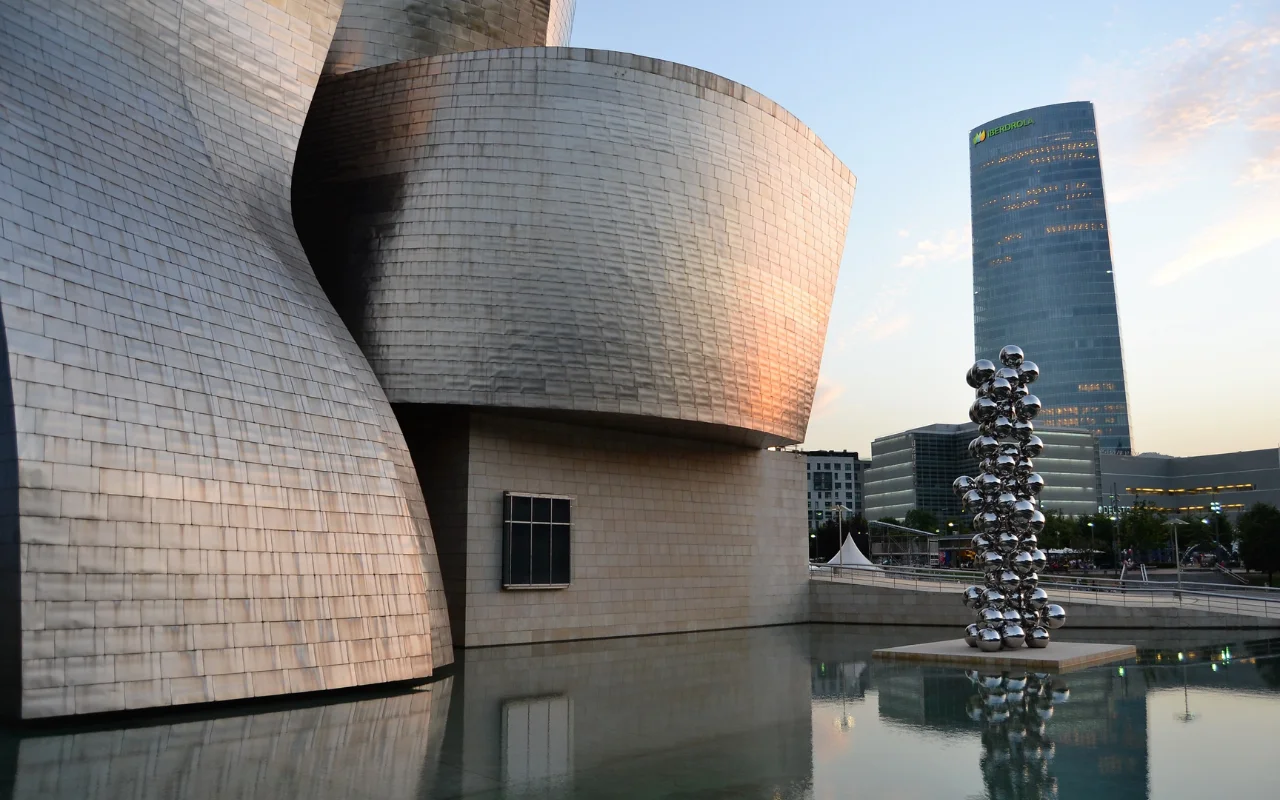Postmodernism emerged as a movement in the United States around the 1960s and 1970s, and then spread to Europe and the rest of the world. According to theorist Charles Jencks, the symbolic end of the Modern Movement and the start of postmodernism took place at 3:32 PM on July 15, 1972. This moment marked the demolition of the Pruitt-Igoe housing complex in St. Louis, an awarded work that embodied Le Corbusier's "machine for modern living" but was considered uninhabitable.
Literally, "postmodernism" means after modernism. In architecture, postmodernity manifested as a reaction against the principles of the modern movement. Postmodern architects rejected the principles of Architectural Rationalism and the International Style, such as the idea that form should follow function and the preference for the open plan and ornamental nudity. Instead, they embraced values such as ambiguity, irony, complexity, and a diversity of styles, and reclaimed historical references in their designs.
Postmodern buildings are characterized by their rejection of modernist norms, their reintroduction of ornamentation and historical references, and their emphasis on diversity and contradiction. Although the heyday of postmodernism may have passed, its influence remains evident in contemporary architecture. Postmodern principles continue to inform the work of many architects today, demonstrating the relevance and resilience of this movement.
According to London artist and designer Adam Nathaniel Furman, founder of the Postmodern Society and, according to some experts, the face of the resurgence of postmodernism, this architectural movement is far from over. In fact, Furman asserts that it still has a lot to offer, despite the mixed feelings that this movement may generate.
Spanish Postmodernist Architects
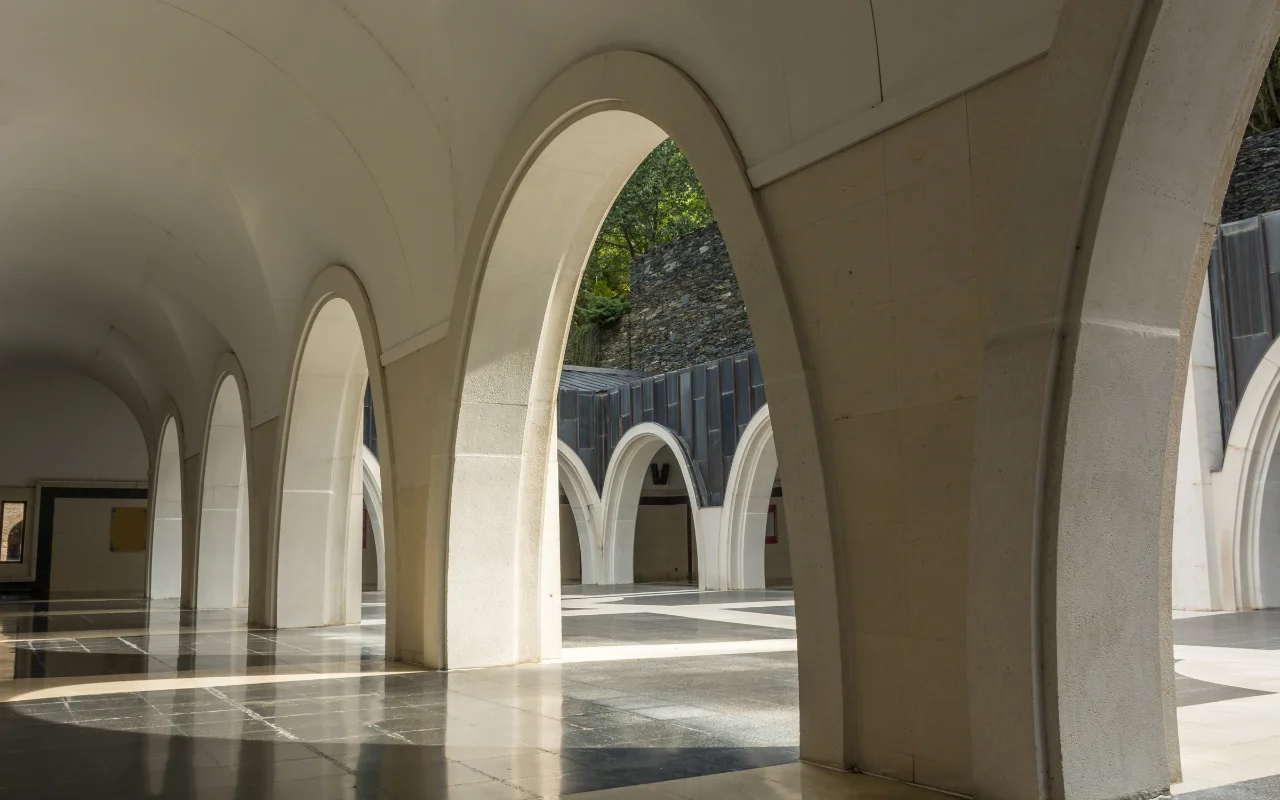
Prominent figures in postmodern architecture worldwide include Oscar Niemeyer, Frank Gehry, Charles W. Moore, Zaha Hadid, and Aldo Rossi.
In Spain, we find renowned architects such as Ricardo Bofill, Rafael Moneo, or Studio Per. It can be said that the latter aligned with international postmodern currents, while others, like Santiago Calatrava, Linazasoro or Vázquez Consuegra, incorporated postmodern elements in some of their works or, at least, cannot be solely classified as postmodernist architects. Special mention to Portuguese architect Alvaro Siza, who with his vision of minimalism and rationalism managed to be the first non-Spanish architect to receive the National Architecture Prize.
Postmodernist Buildings in Spain
La Muralla Roja

La Muralla Roja is one of the most iconic works of the Spanish architect Ricardo Bofill and a prominent exponent of postmodernism in Spanish architecture. Designed in 1968 and fully constructed by 1973, this building is located in the Manzanera development in Calpe, Alicante.
The design of "La Muralla Roja" was inspired by the qasbah, a type of fortified building typical of the Maghreb. This inspiration can be observed in the straight shapes, the nooks that form the rooms protruding from one another, in the details of the stepped battlements, and in the reddish tones of the clay with which the qasbahs are built.
Guggenheim Museum
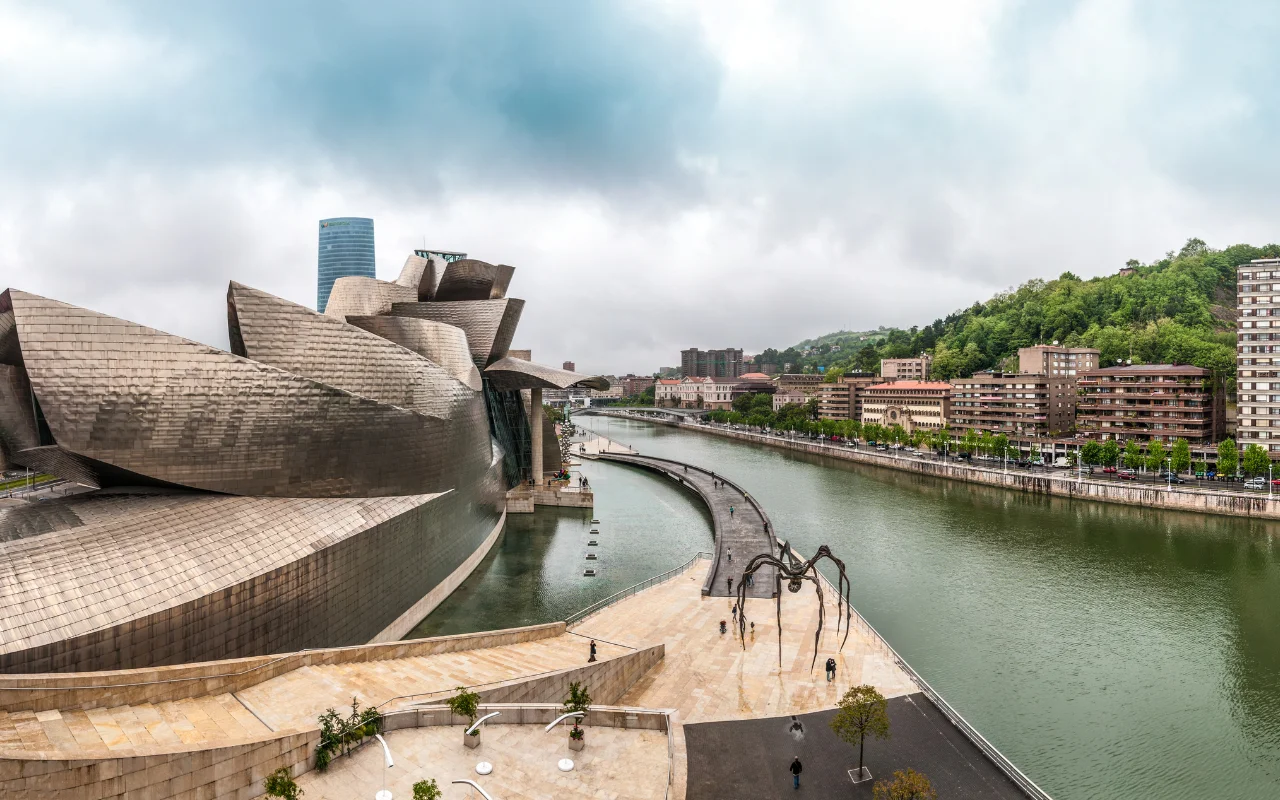
The Guggenheim Museum in Bilbao, designed by Canadian-American architect Frank Gehry, is one of the most emblematic examples of postmodern architecture in Spain and worldwide. Opened in 1997, this building is famous for its innovative and bold design, which combines curved and twisted shapes with materials such as titanium and glass to create a structure that looks more like a sculpture than a traditional building. The design of the Bilbao Guggenheim reflects the influence of postmodernism in its rejection of the simplicity and uniformity of modernism, and its emphasis on form and individual expression.
The Bilbao Guggenheim is not only an architectural landmark, but it has also had a significant impact on the city of Bilbao and the Basque Country region. Since its opening, the museum has attracted millions of visitors from around the world, boosting tourism and the local economy in a phenomenon known as the Guggenheim effect.
Ciutat de les Arts i les Ciències
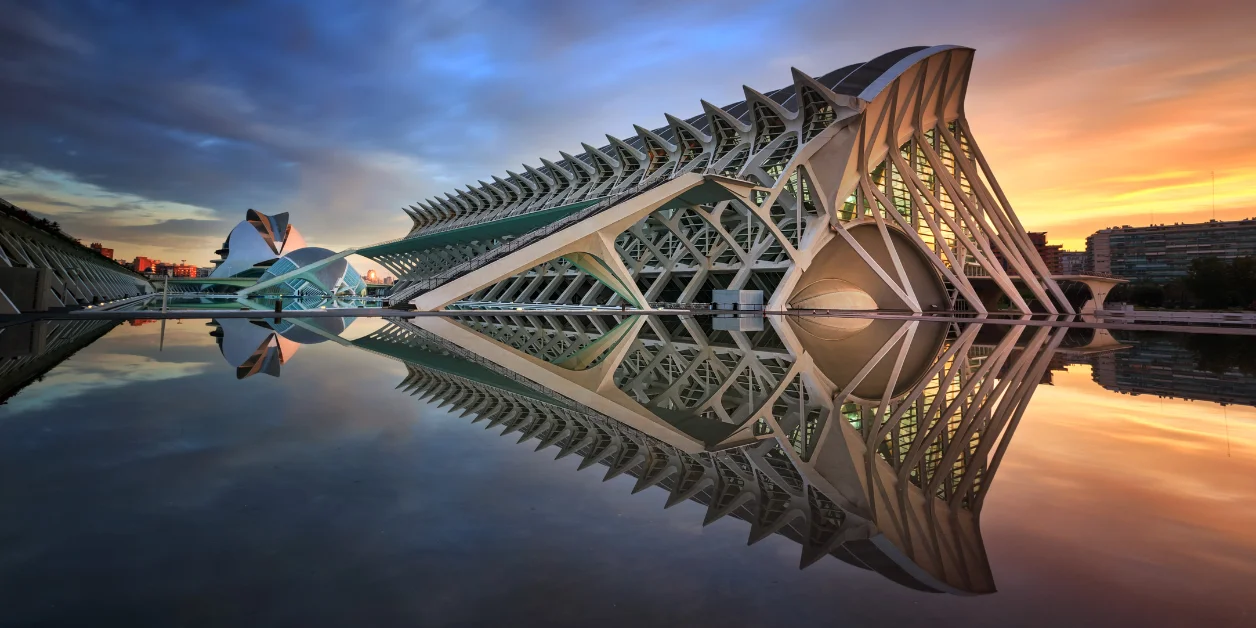
The City of Arts and Sciences in Valencia, designed by Spanish architects Santiago Calatrava and Félix Candela, is another standout example of postmodern architecture in Spain. This cultural and entertainment complex, opened in 1998, is known for its futuristic and highly innovative design. The buildings, which include a planetarium, an IMAX cinema, a science museum, and an arts palace, feature organic and fluid shapes that recall animal or plant skeletons, and are constructed with materials like steel, glass, and white concrete.
The cultural complex has attracted millions of visitors from around the world, becoming a symbol of the city and a driver for tourism and the local economy. Like the Guggenheim in Bilbao, the City of Arts and Sciences demonstrates the power of postmodern architecture to transform the urban landscape and revitalize a city.
Walden 7

Walden 7, located in Sant Just Desvern, on the outskirts of Barcelona, is an iconic example of postmodern architecture in Spain. Designed by architect Ricardo Bofill and completed in 1975, Walden 7 is a residential complex that challenges the conventions of collective housing. The building, which consists of 18 interconnected towers, features a series of interior patios and terraces that create a labyrinth of living spaces.
Instead of a series of identical apartments, Bofill created a variety of unique and personalized spaces. The building is also notable for its use of color, with its facades painted in shades of red and blue. Walden 7 is more than a residential building; it is an architectural statement that challenges norms and celebrates diversity and individuality.
Gate of Europe (KIO Towers)
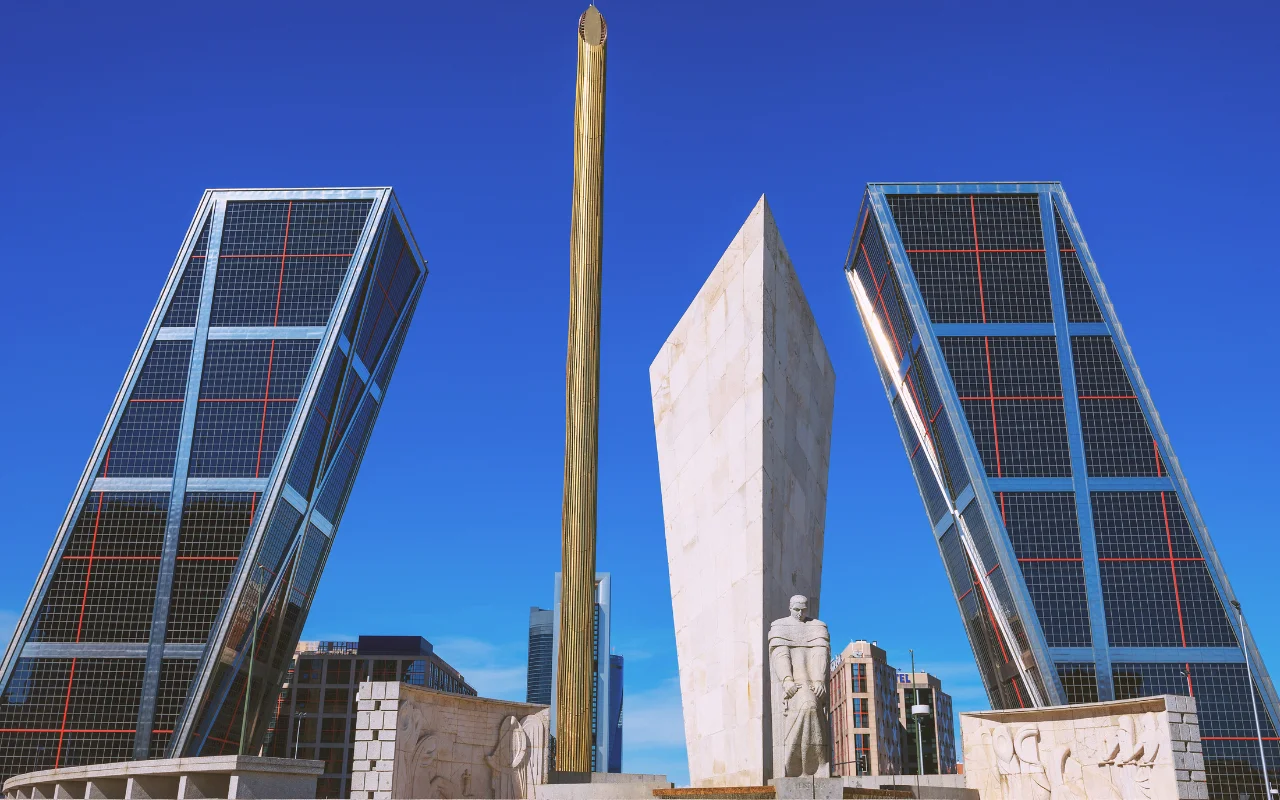
The Gate of Europe Towers, better known as the KIO Towers, are another standout example of postmodern architecture in Spain. Designed by American architects Philip Johnson and John Burgee, the KIO Towers are two slanted skyscrapers that face each other, creating a symbolic gateway to the city. Completed in 1996, these towers were the world's first inclined skyscrapers, with an inclination of 15 degrees from the vertical.
Defying the architectural conventions of rectangular-shaped skyscrapers, Johnson and Burgee adopted a bold and dynamic approach in their design. The KIO Towers stand out for their choice of materials, with dark granite and glass facades that create a striking contrast with the Madrid sky. These towers go beyond being mere office buildings; they have redefined Madrid's skyline and left a lasting impact on Spain's postmodern architecture.
W Barcelona Hotel (Sail Hotel)
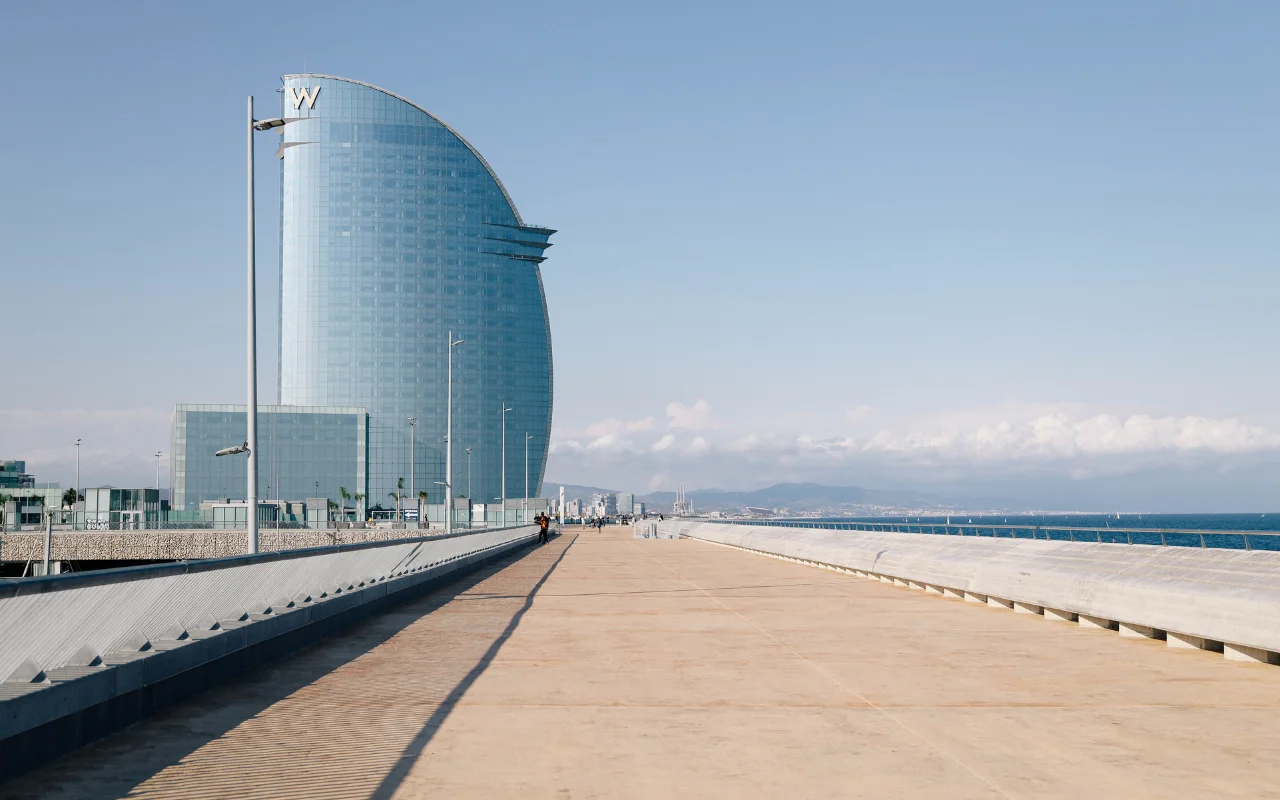
The W Barcelona Hotel, commonly known as Hotel Vela due to its distinctive silhouette, is a jewel of postmodern architecture in Spain. Like many other large postmodern Spanish buildings, it was conceived by the renowned Catalan architect Ricardo Bofill. The hotel stands majestically on the Barcelona coast since its completion in 2009.
The unique design of the W Hotel evokes a ship's sail, a nod to its privileged location in the port of Barcelona. This innovative design favors originality and diversity over uniformity. The building's glass facade, which reflects the surrounding sea and sky, adds a touch of sophistication and modernity.
Festivals Palace of Cantabria
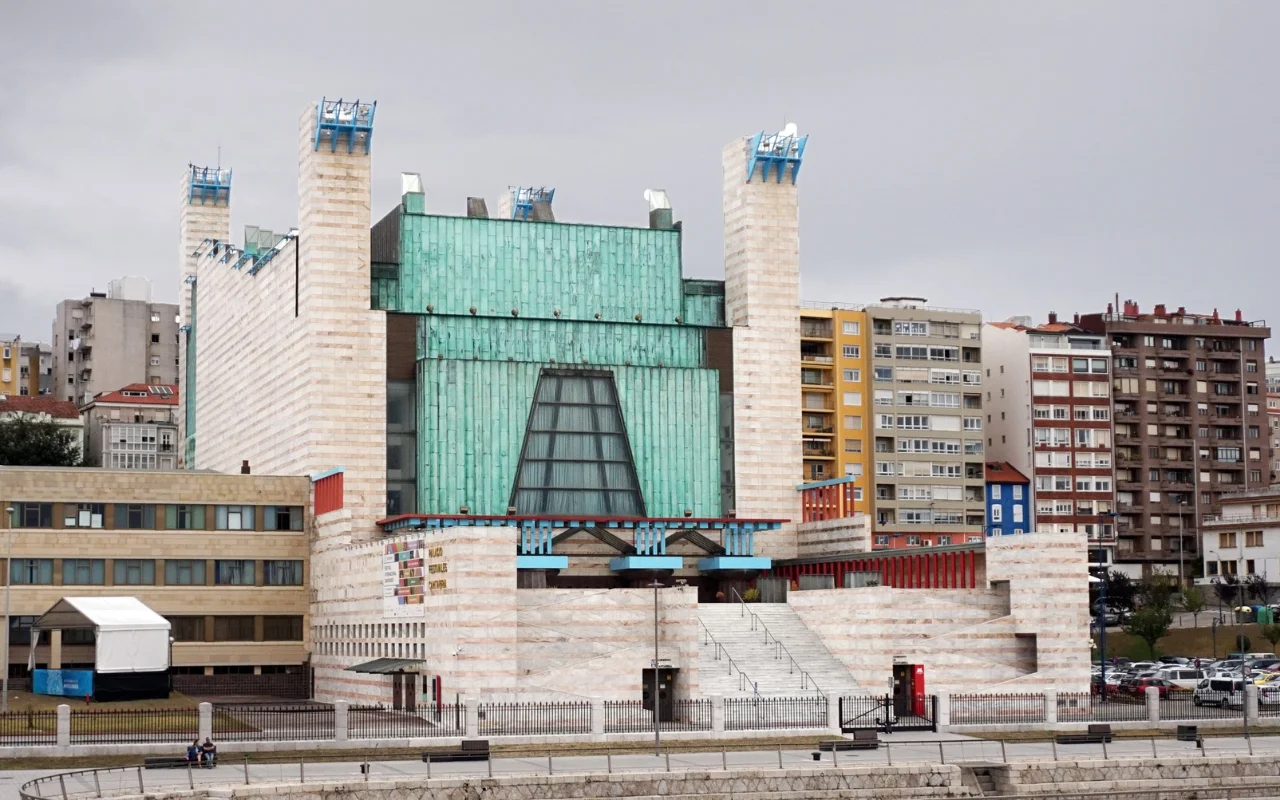
The Festivals Palace of Cantabria, located in the city of Santander, is a standout example of postmodern architecture in Spain. Designed by the architect Francisco Javier Sáenz de Oiza, this building was completed in 1990 and has become a cultural and architectural landmark in the region.
Instead of following a conventional form, Sáenz de Oiza opted for a design that combines modern and traditional elements, reflecting the diversity and complexity of postmodernism. The building is characterized by its innovative use of geometric shapes and its concrete and glass facade, which gives it a distinctive and contemporary look.
Postmodern Architecture or Postmodernist Architecture?
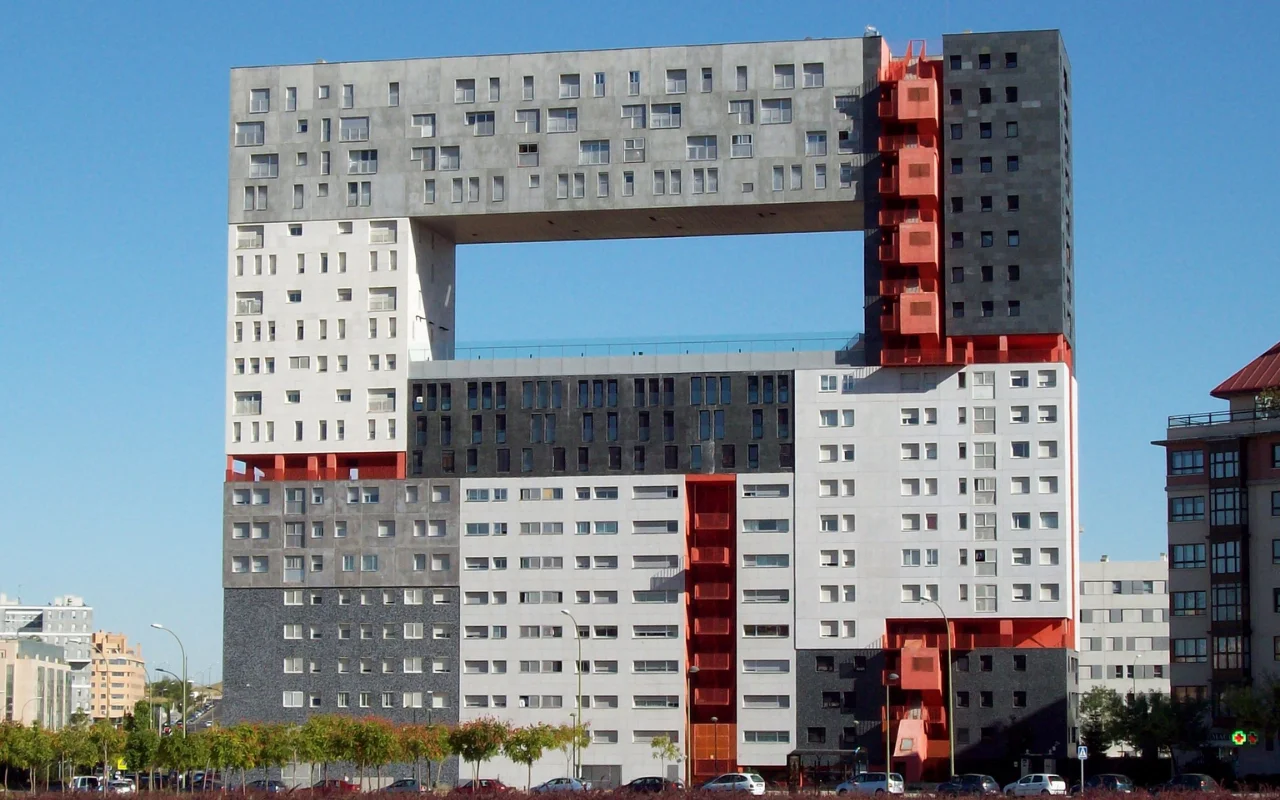
Postmodernism is a movement that has left an indelible mark on the architecture of the 20th and 21st centuries. However, a question often arises: Should we refer to this movement as postmodern architecture or postmodernist architecture? Although these terms are used quite interchangeably, there are nuances worth exploring.
Postmodern architecture refers to architecture that follows the principles of postmodernism. This movement moved away from modernist ideas, which favored simplicity and uniformity, and instead embraced complexity and contradiction. Postmodern buildings often reference older architectural styles and pay greater attention to context and meaning.
On the other hand, the term postmodernist architecture might imply a greater emphasis on postmodernism as an ideology or an attitude. A postmodernist architect could be someone who not only designs buildings in the postmodern style, but also embraces the postmodern philosophy in their approach to architecture. This might include a critique of architectural norms and conventions, an appreciation for diversity and difference, and a focus on architecture as a form of communication and cultural expression.
It is important to note that, although these terms have slightly different connotations, they both refer to the same architectural movement. In practice, "postmodern architecture" and "postmodernist architecture" are used quite interchangeably. What is undisputable is the impact this movement has had on architecture. From the reintroduction of ornamentation and historical references to the emphasis on diversity and contradiction, postmodernism has expanded the boundaries of what is possible in architecture. And while the terms may vary, the influence and importance of postmodernism remain constant.
Latest blog entries

Tourist Rental Law in the Valencian Community (2025): Complete Guide
19 November, 2025

Exclusive Apartments on the Top Floor: Benefits, Lifestyle and Market Trends on the Costa Blanca & Ibiza
31 October, 2025

Solar energy on the Costa Blanca: profitability and added value for luxury homes
29 October, 2025
